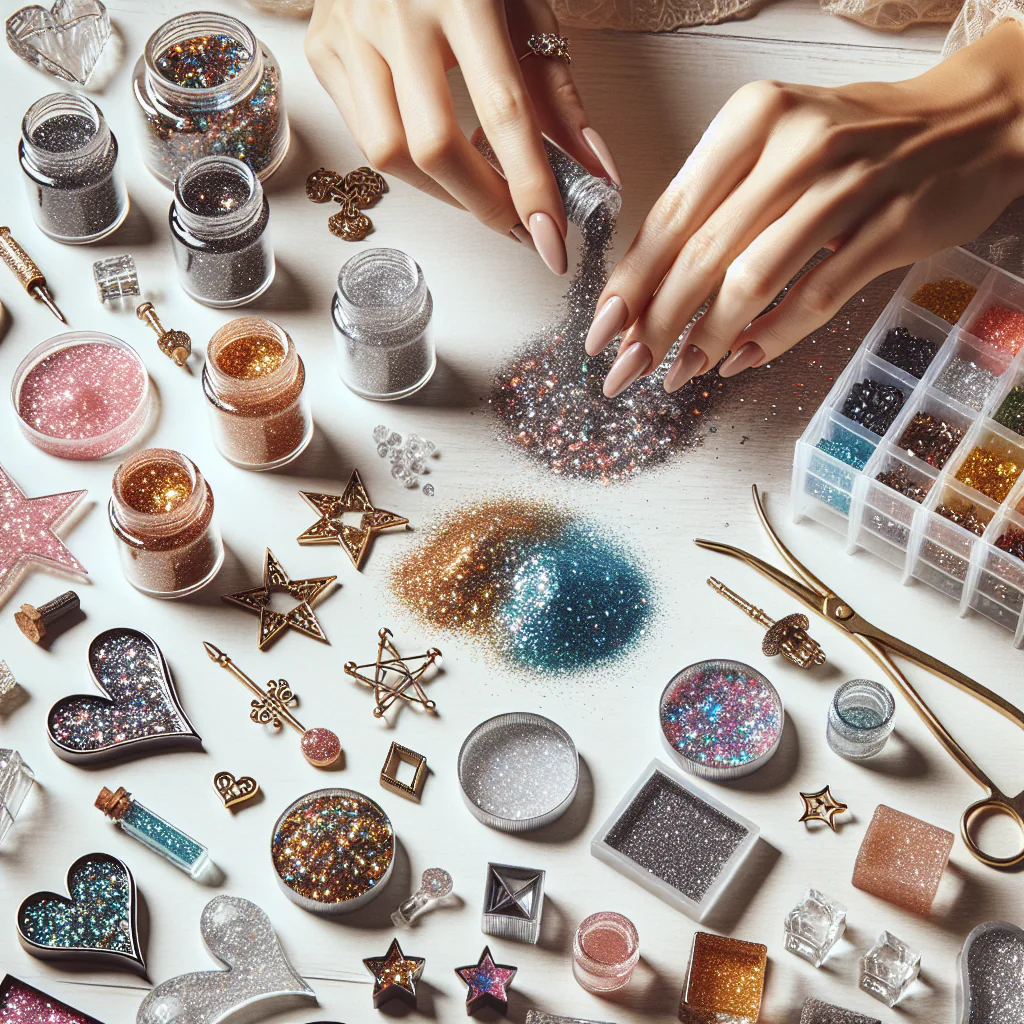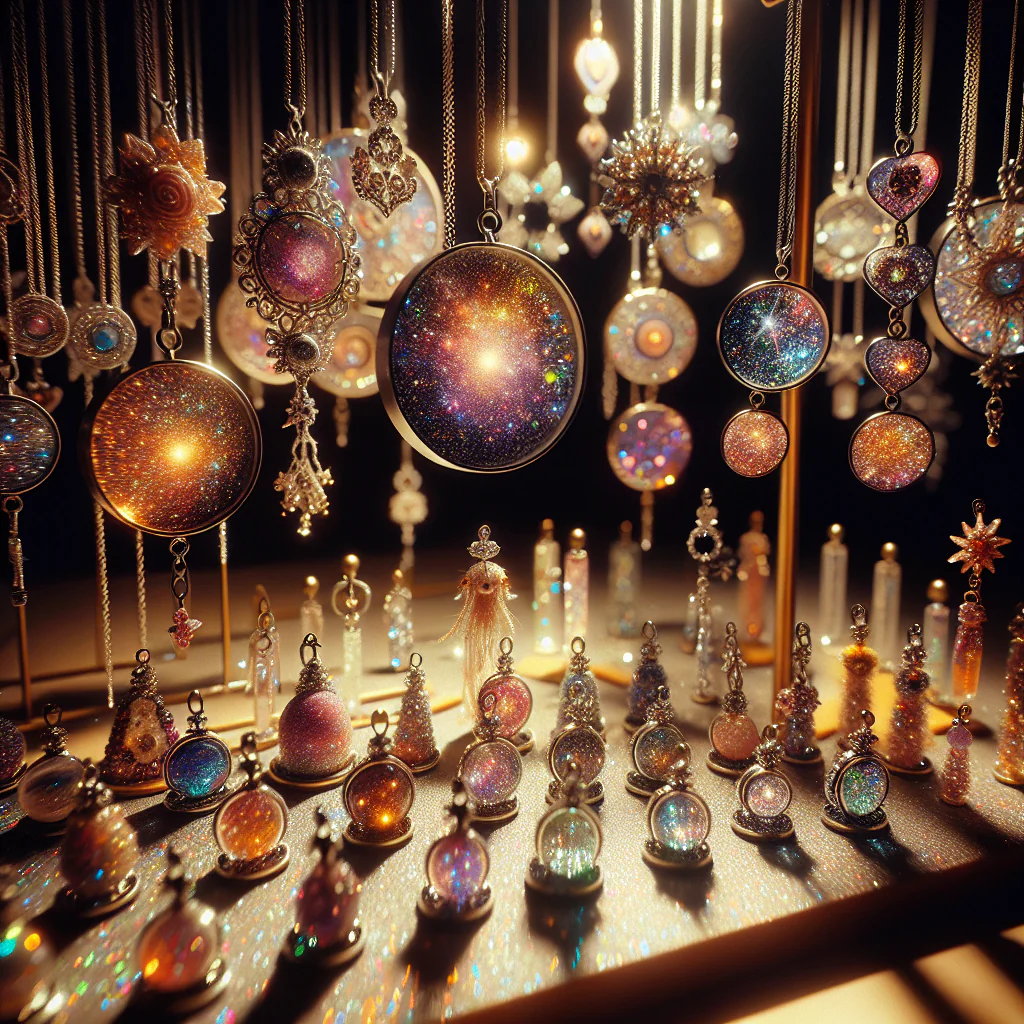-
Table of Contents
Unleash Your Creativity: Craft Stunning Jewelry at Home with Glitter and Resin Molds!
Unlock your creativity and transform your jewelry-making skills with glitter and resin molds! Discover the art of crafting stunning, one-of-a-kind pieces right at home. Don’t wait—start your journey today! [Learn more here](https://www.glittersmall.com/resin-molds/).
Introduction
Glitter and Resin Molds have become a popular medium for crafting stunning jewelry at home, allowing crafters to unleash their creativity and design unique pieces. By combining vibrant glitters with versatile resin, you can create eye-catching accessories that reflect your personal style. This guide will explore the essential materials, techniques, and tips for working with glitter and Resin Molds, empowering you to produce beautiful, one-of-a-kind jewelry that can be worn or gifted. Whether you’re a beginner or an experienced crafter, the world of resin jewelry offers endless possibilities for artistic expression.
Choosing The Right Resin Molds For Glitter Jewelry
When embarking on the journey of creating stunning jewelry with glitter and resin, one of the most crucial steps is selecting the right Resin Molds. The choice of mold can significantly influence the final appearance and quality of the jewelry pieces you produce. Therefore, understanding the various types of molds available and their specific characteristics is essential for achieving the desired results.
To begin with, it is important to consider the material of the molds. Silicone molds are particularly popular among crafters due to their flexibility and ease of use. Unlike rigid molds, silicone molds allow for easy demolding, which is especially beneficial when working with intricate designs. Additionally, silicone is non-stick, reducing the likelihood of damage to the finished piece. This flexibility not only facilitates the removal of the cured resin but also enables the creation of detailed shapes that can enhance the overall aesthetic of the jewelry.
Moreover, the size and shape of the molds play a pivotal role in the design process. When selecting molds, it is advisable to choose shapes that resonate with your personal style and the type of jewelry you wish to create. For instance, if you are interested in crafting earrings, smaller molds with delicate designs may be more suitable. Conversely, larger molds can be utilized for statement pieces such as pendants or brooches. By carefully considering the dimensions and forms of the molds, you can ensure that your jewelry will be both visually appealing and proportionate.
In addition to size and material, the design of the mold itself is another critical factor. Molds come in a variety of patterns, from geometric shapes to floral motifs, and selecting a design that complements your glitter choice can elevate your jewelry to new heights. For example, a mold with intricate detailing can create a stunning backdrop for vibrant glitter, allowing the colors to pop and catch the light. Therefore, it is beneficial to experiment with different designs to discover which combinations yield the most striking results.
Furthermore, it is essential to consider the compatibility of the resin with the chosen mold. Not all resins are created equal, and some may not cure properly in certain types of molds. It is advisable to read the manufacturer’s guidelines regarding the specific resin you plan to use, as this can help prevent issues such as sticking or incomplete curing. Additionally, some molds may require a release agent to ensure that the resin does not adhere to the surface, so being aware of these requirements can save time and frustration during the crafting process.
As you delve deeper into the world of resin jewelry making, it is also worth exploring the option of custom molds. While pre-made molds are readily available, creating your own molds can provide a unique opportunity to design pieces that are truly one-of-a-kind. This process may involve using silicone mold-making kits, which allow you to capture any object or shape you desire, thus expanding your creative possibilities.
In conclusion, choosing the right Resin Molds for glitter jewelry is a fundamental aspect of the crafting process. By considering factors such as material, size, design, and compatibility with resin, you can ensure that your creations are not only beautiful but also structurally sound. With careful selection and a bit of experimentation, you will be well on your way to producing stunning jewelry pieces that reflect your personal style and creativity.
Step-By-Step Guide To Mixing Glitter With Resin
Creating stunning jewelry at home using glitter and Resin Molds is an engaging and rewarding craft that allows for personal expression and creativity. To achieve beautiful results, it is essential to follow a systematic approach to mixing glitter with resin. This step-by-step guide will provide you with the necessary instructions to ensure a successful project.
To begin, gather all the materials you will need. This includes epoxy resin, hardener, glitter in your desired colors, mixing cups, stirring sticks, and the Resin Molds you plan to use. It is also advisable to have gloves and a protective workspace, as resin can be messy and may irritate the skin. Once you have everything ready, you can proceed to the mixing process.
First, measure the resin and hardener according to the manufacturer’s instructions. Typically, resin and hardener are mixed in a specific ratio, often 1:1 or 2:1, depending on the product. It is crucial to adhere to these guidelines to ensure proper curing. Pour the measured resin into a mixing cup, followed by the hardener. Using a stirring stick, mix the two components thoroughly for at least three to five minutes. This step is vital, as inadequate mixing can lead to a sticky or improperly cured final product.
After achieving a uniform mixture, it is time to incorporate the glitter. The amount of glitter you choose to add can vary based on your desired effect; however, a general guideline is to use about 10% of the total resin volume. For instance, if you are working with 100 milliliters of resin, approximately 10 milliliters of glitter would be appropriate. Gradually sprinkle the glitter into the mixed resin while stirring continuously. This ensures that the glitter is evenly distributed throughout the resin, creating a cohesive look.
Once the glitter is fully incorporated, you may want to consider adding color to your resin mixture. This can be achieved by using resin dyes or pigments, which can enhance the visual appeal of your jewelry. If you choose to add color, do so after mixing in the glitter, and stir until the color is evenly blended. It is important to note that some colors may affect the transparency of the resin, so choose hues that complement your glitter for the best results.
With your resin mixture now complete, the next step is to pour it into the molds. Carefully pour the resin into each mold cavity, taking care not to overfill. It is advisable to pour slowly to minimize the formation of air bubbles. If bubbles do appear, you can gently use a heat gun or a lighter held at a distance to pop them. This step is crucial, as trapped air can detract from the final appearance of your jewelry.
After pouring, allow the resin to cure according to the manufacturer’s instructions. Curing times can vary, but it typically ranges from 24 to 72 hours. During this time, it is essential to keep the molds in a dust-free environment to prevent any debris from settling on the surface of the resin. Once fully cured, carefully demold your jewelry pieces and inspect them for any imperfections. If necessary, you can sand down rough edges or apply a top coat of resin for added shine.
In conclusion, mixing glitter with resin to create stunning jewelry at home is a straightforward process that, when followed step by step, can yield beautiful results. By carefully measuring, mixing, and pouring, you can unleash your creativity and produce unique pieces that reflect your personal style.
Tips For Finishing And Polishing Your Resin Jewelry
Creating stunning jewelry with glitter and Resin Molds can be a rewarding and enjoyable experience. However, the finishing and polishing stages are crucial in ensuring that your pieces not only look professional but also have a smooth, appealing finish. To achieve the best results, it is essential to follow a series of steps that will enhance the overall appearance of your resin jewelry.
First and foremost, once your resin has cured completely, it is important to remove the pieces from the molds carefully. This step requires a gentle touch, as resin can be delicate, especially if it has intricate designs or thin sections. To facilitate the removal process, you may consider using a mold release spray before pouring the resin. This can help prevent sticking and make the demolding process smoother. After removing the pieces, inspect them for any imperfections, such as rough edges or uneven surfaces.
Next, addressing these imperfections is vital for achieving a polished look. Begin by using fine-grit sandpaper, typically around 400 to 600 grit, to gently sand down any rough areas. It is advisable to work in a well-ventilated area and wear a mask to avoid inhaling any dust particles. Sanding should be done in a circular motion, gradually smoothing out the surface. If you encounter deeper scratches or uneven spots, you may need to start with a coarser grit sandpaper before transitioning to finer grits. This gradual approach will help you achieve a smooth finish without damaging the resin.
Once you have sanded the pieces to your satisfaction, the next step involves polishing. Polishing resin jewelry can significantly enhance its shine and overall appearance. For this purpose, you can use a resin polish or a plastic polish, both of which are designed to restore clarity and luster. Apply a small amount of polish to a soft cloth or a polishing wheel and gently buff the surface of the resin. It is essential to use a light touch during this process, as excessive pressure can lead to scratches or damage. Continue buffing until you achieve the desired level of shine.
In addition to polishing, you may also consider applying a topcoat to your resin jewelry. A clear resin topcoat can provide an extra layer of protection while enhancing the depth of color and glitter within your pieces. To apply a topcoat, ensure that the initial layer of resin is completely cured and free of dust. Pour a small amount of clear resin over the piece and spread it evenly using a brush or a spatula. Allow it to cure according to the manufacturer’s instructions, ensuring that it is placed in a dust-free environment to avoid imperfections.
Finally, after completing the finishing and polishing process, it is essential to clean your jewelry thoroughly. Use a soft cloth to wipe away any residue from the polishing process, ensuring that your pieces are free from dust and fingerprints. This final touch will not only enhance the visual appeal of your jewelry but also prepare it for presentation or gifting.
In conclusion, the finishing and polishing stages of creating resin jewelry are critical in achieving a professional look. By carefully sanding, polishing, and applying a topcoat, you can transform your creations into stunning pieces that reflect your artistic vision. With patience and attention to detail, you can elevate your resin jewelry-making skills and produce beautiful, high-quality items that you can proudly wear or share with others.
Q&A
1. **What materials do I need to create jewelry with glitter and Resin Molds?**
You will need epoxy resin, hardener, glitter (of your choice), silicone molds, mixing cups, stirring sticks, gloves, and a heat gun or torch to remove bubbles.
2. **How do I mix the resin and glitter for the molds?**
Measure equal parts of resin and hardener according to the manufacturer’s instructions, mix thoroughly, then gradually add glitter while stirring until you achieve your desired sparkle.
3. **What is the curing time for resin jewelry?**
Curing time typically ranges from 24 to 72 hours, depending on the resin used. Always refer to the specific product instructions for accurate curing times.
Conclusion
In conclusion, creating stunning jewelry at home using glitter and Resin Molds is an accessible and enjoyable craft that allows for endless creativity. By selecting the right materials, mastering the mixing and pouring techniques, and experimenting with various designs, crafters can produce unique, eye-catching pieces. With practice and patience, anyone can transform simple resin and glitter into beautiful, personalized jewelry that showcases their individual style.










